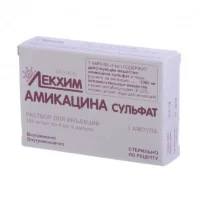Description
Levomycetin-OZ Eye Drops
Ingredients
- Each milliliter of Levomycetin-OZ Eye Drops contains 2.5 mg of Levofloxacin and 5 mg of Chloramphenicol.
Dosage
- The recommended dosage for Levomycetin-OZ Eye Drops is 1 to 2 drops in the affected eye(s) every 4 hours. Do not exceed the prescribed dosage.
Indications
- Levomycetin-OZ Eye Drops are indicated for the treatment of bacterial eye infections such as conjunctivitis and keratitis.
Contraindications
- Avoid using Levomycetin-OZ Eye Drops if you are allergic to any of the ingredients. Consult a healthcare provider before use if you are pregnant or breastfeeding.
Directions
- Before using the eye drops, wash your hands. Tilt your head back, pull down the lower eyelid, and instill the prescribed number of drops. Close your eyes gently for a few minutes.
Scientific Evidence
- Studies have shown that Levofloxacin and Chloramphenicol in Levomycetin-OZ Eye Drops have potent antibacterial properties against a wide range of pathogens commonly found in ocular infections.
Additional Information
- Completing the full course of treatment as prescribed is crucial, even if symptoms improve before finishing the medication.
Levomycetin-OZ Eye Drops work by inhibiting bacterial protein synthesis, leading to bacterial death. Levofloxacin inhibits DNA gyrase enzyme, and Chloramphenicol interferes with protein synthesis.
Research comparing Levomycetin-OZ Eye Drops with other eye antibiotics has shown similar efficacy in treating bacterial eye infections, with a good safety profile.





